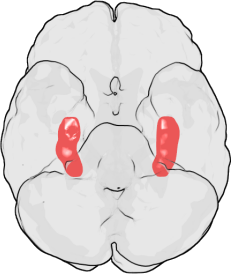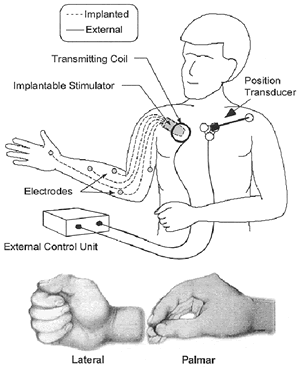Have you ever wondered how we remember things, how we know one event followed another, how we are able to chronologically compartmentalize our memories? A recent article on a study published this summer in the Journal of Neuroscience reveals that time cells found in the hippocampus may be the answer.
Neuroscientist Leila Reddy of the French National Center for Scientific Research and her team conducted a study to confirm the existence, and reveal the function of time cells in the brain through understanding how neurons in the hippocampus relay temporal information.
 They found that these time cells consecutively fire during tasks in order to organize the specific moments of an experience in accordance to time. The study also confirmed that these time cells exist in the hippocampus (pictured on the right), which is an important location for memory processing. As an event plays out and a memory is created, these time cells turn on and start firing, recording each moment with a chronological time stamp. The work done in this study is crucial as it reveals a key component in memory formation and function.
They found that these time cells consecutively fire during tasks in order to organize the specific moments of an experience in accordance to time. The study also confirmed that these time cells exist in the hippocampus (pictured on the right), which is an important location for memory processing. As an event plays out and a memory is created, these time cells turn on and start firing, recording each moment with a chronological time stamp. The work done in this study is crucial as it reveals a key component in memory formation and function.
The co-author of the study, Matthew Self of the Netherlands Institute for Neuroscience, further relayed the importance of their findings, saying they believe “that time cells may be the underlying basis for encoding when something happened.”
Time cells have been known to exist in rodents for a while now, but this study, conducted just late last year, was the first to identify these time cells in the human brain as well. But the study did not stop there. Reddy and her team continued to investigate these time cells. They looked at the hippocampal activity of willing epilepsy patients with electrodes implanted in their brain.
 Patients with epilepsy were most likely chosen for this study because their nerve cells communicate with one another in abnormal ways and send each other messages that get mixed up. Electrode implants would not only benefit the patient by producing impulses to regulate abnormal impulses, helping with an preventing seizures, but would work well for the study because the implant also allows neuron activity to be monitored (shown to the left).
Patients with epilepsy were most likely chosen for this study because their nerve cells communicate with one another in abnormal ways and send each other messages that get mixed up. Electrode implants would not only benefit the patient by producing impulses to regulate abnormal impulses, helping with an preventing seizures, but would work well for the study because the implant also allows neuron activity to be monitored (shown to the left).
About one week after their electrode implant surgery, the patients would participate in two experiments, during which their hippocampus activity would be monitored. The first experiment presented the patients with a sequence of five to seven images containing different settings or people – each image shown for 1.5 seconds with a .5 second break in between. This sequence was presented to the patient several times in the same order. Randomly, for one fourth of the intervals, the sequence would pause and the patient would be asked to identify which of two images should be the next one to occur. The research in this study found that, for all sixty repetitions of the sequence, all of the time sensitive neurons in the hippocampus of the patients fired at specific moments between each random pause in the sequence.
The second experiment was the same, except it included another component: a distraction. A black screen would show for 10 seconds after five sequences were repeated to half the patients, and after two sequences were repeated for the other half. The sequence was repeated to both groups a total of 30 times. In this experiment the patients were again tested about the order of the images. The results showed that neurons would fire corresponding to specific images, and that the time cells still turned on during the 10 second black screen distraction. The black screen was found to actually kelp the patients remember the correct order of images.
To find if there was time information in the activity of neurons in the hippocampus, the researchers stimulated time cell neurons already activated by an image in the experiment to test the firing activity of each neuron as a specific moment in time connected to a specific image. As a result they found that, “the activity pattern across the hippocampus [appeared] to simultaneously provide [them] with both the time stamp and the contents of the experience,” said Matthew Self. The researchers ability to decode moments in time from the neuron activity proved that the hippocampus in the human brain contains neurons capable of time-tracking.
These findings could explain why damage to the hippocampus can result in individuals having the ability to recall events, but not place them in chronological order. This problem is also seen in Alzheimer’s patients and those with other neurodegenerative conditions. A better understanding of cellular contributions to memory function can help us understand how and why people suffer from memory loss diseases, and give us a little bit of hope for the possibility of finding new and improved treatments and preventions.


Leave a Reply